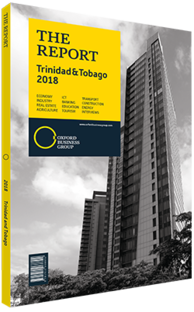Franklin Khan, Minister of Energy and Energy Industries: Interview

Interview: Franklin Khan
What events will shape the energy sector in 2018?
FRANKLIN KHAN: The coming year will undoubtedly be much more positive in all aspects than the previous three. After a very challenging period, it seems like the sector has turned the corner. Since the implementation of the Trinidad and Tobago gas model – which amalgamated international producers in the upstream segment, with the National Gas Company (NGC) as the aggregator – liquefied natural gas and petrochemical production in the downstream segment lost productivity as gas demand outstripped production.
However, increased levels of exploration and the development of new gas fields, particularly in the Juniper and Angelin fields – as well as the discovery of the Savannah and Macadamia fields in 2017 – marked the beginning of the recovery of the supply side.
Additionally, seven offshore rigs have been fully operational since spring 2018. With this very positive news, it is possible to forecast that the supply and demand of gas will intersect by the end of 2019. Once these challenges are solved, the medium- to long-term objective will be increased diversification and specialisation into higher-value-added downstream production, especially products derived from ammonia and methanol.
How can regional cooperation be further fostered?
KHAN: Regional cooperation will prove crucial, not only vis-à-vis our closest neighbours – Venezuela and Guyana – but also Suriname, Grenada and Barbados. Regarding our closest and largest neighbour, Venezuela, T&T signed the Dragon field-Hibiscus agreement in December 2016. In addition, two crucial agreements are to be signed. We are finalising gas sales agreements, with Shell, NGC and PDVSA as signatories, and we are working on the unitisation and unit operating agreement for the Loran-Manatee field. More regional cooperation will ensure the continuity and long-term supply of Venezuelan gas to T&T. We believe that the first dispatch of Venezuelan gas will occur by late 2019. Through these, Venezuela will be able to monetise gas production through the use of T&T’s infrastructure.
With recent large discoveries in Guyana, a sudden Caribbean energy axis seems to have appeared. Guyana is expected to be producing 100,000 barrels per day by 2020, and 200,000 barrels by 2023. Trinbagonian companies have a unique opportunity to share their experiences and expertise, and source business activities in these new markets.
Additionally, increased government-to-government cooperation will mean that Guyana, Barbados, Suriname and Grenada will be able to benefit from T&T’s experience in taxation and contract management with foreign oil and gas companies, but Guyana and Barbados will find T&T’s example especially enlightening.
What benefits are expected to be brought in by the proposed flat royalty of 12.5%?
KHAN: Between 2015 and 2017 a 90% drop could be observed in government revenue coming from the energy sector through the profit-based tax scheme. This led to a restructuring of national expenditure, since the main source of government revenue was almost entirely depleted. A new form of taxation, one taking into account that gas is a non-renewable resource and a valuable commodity, was deemed necessary to solve these challenges. Extractive industry taxation is common practice worldwide, and it seems even more necessary when dealing with a finite resource. In this case, we believe the state has the right to extract rent on behalf of its citizens. Such rent should not be based on company profits but rather on total production levels. While T&T had established a fixed royalty on the oil industry, that was not previously the case in the gas sector. Average royalties in the region amount to 15% or 16%, while in some US states they are over 20%. Therefore, the introduction of a royalty rate that is lower than the regional average was deemed necessary in light of the significant loss in revenue experienced since 2015.
You have reached the limit of premium articles you can view for free.
Choose from the options below to purchase print or digital editions of our Reports. You can also purchase a website subscription giving you unlimited access to all of our Reports online for 12 months.
If you have already purchased this Report or have a website subscription, please login to continue.

